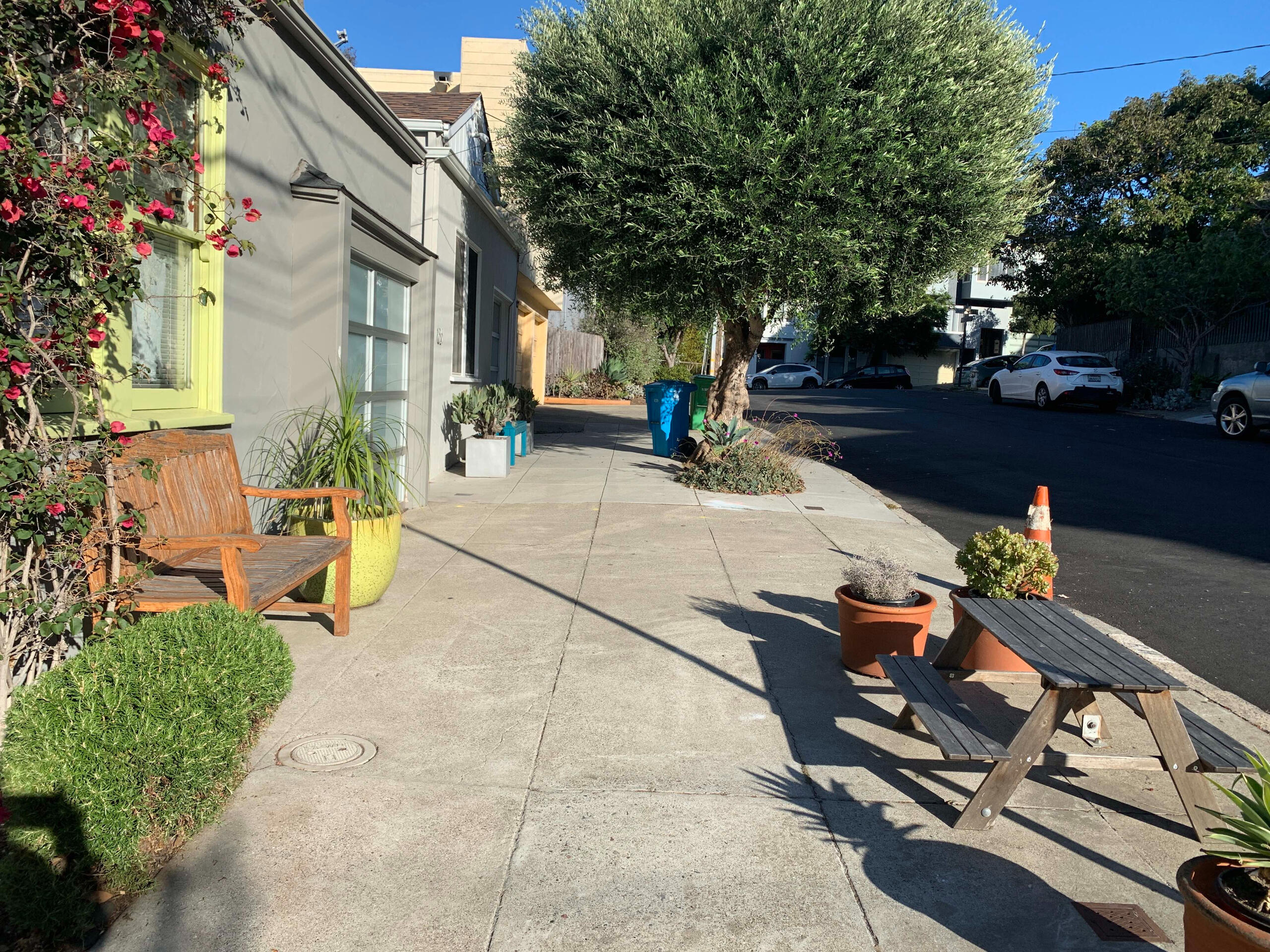
Gardens Not Barricades
Community spaces >> blocking public sidewalks.
We're advocating against sidewalk barricades in SF. Get updates through our newsletter.
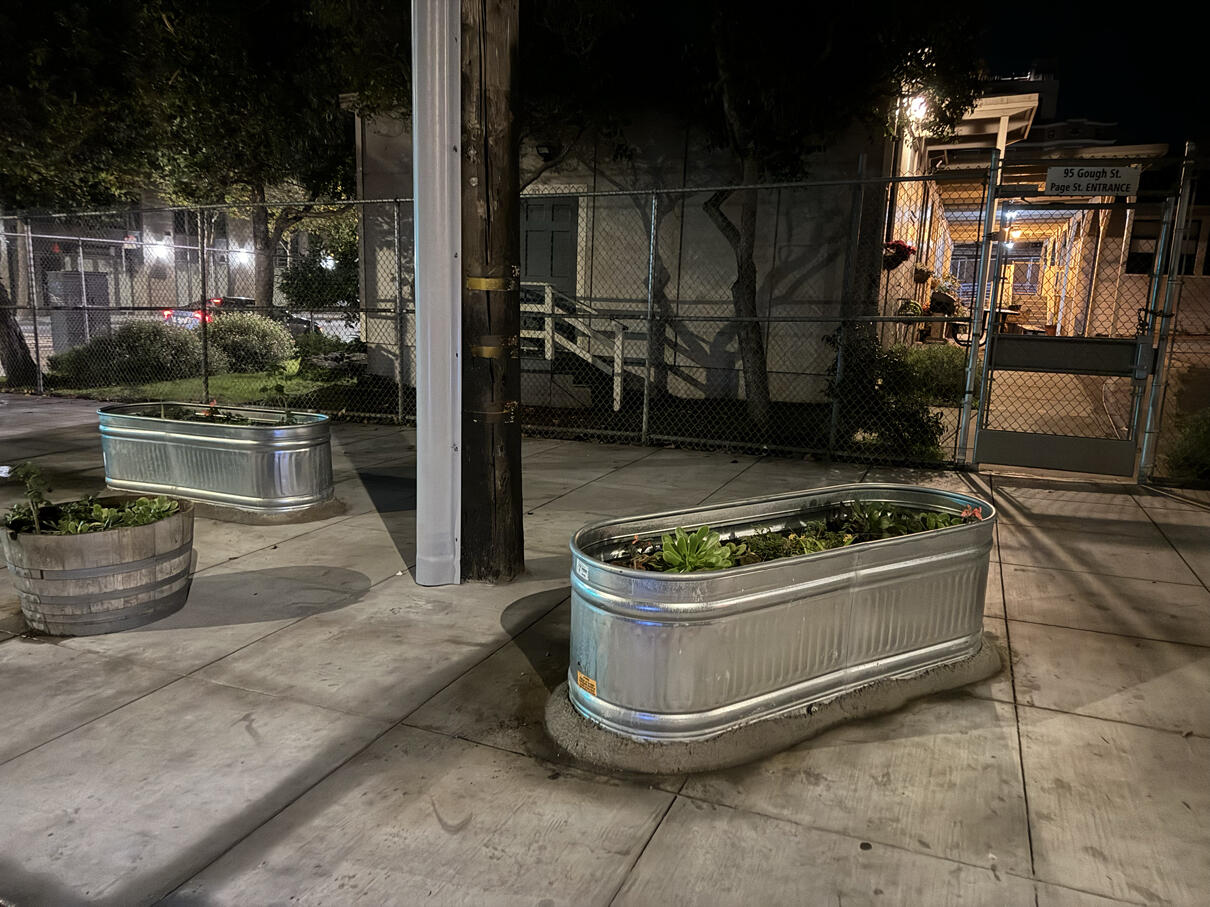
What are planter barricades?
San Francisco has a long tradition of neighbors who beautify their neighborhoods by gardening in the public realm. Done right, it can make for a welcoming and inclusive space for everyone to enjoy.Recently, however, a warped, hostile version of this has been happening in certain parts of the city. It’s the latest non-solution “solution” to homelessness. Property owners and real estate professionals have begun abusing the allowance for planters to place large, bulky containers to obstruct the sidewalk as much as possible, with cheap, barely maintained plants, or no plants at all.These “planters,” which are not even planters — they’re galvanized metal livestock troughs — are designed to increase the value of specific real estate by displacing homeless people around the corner onto a different block. Nothing is solved, the amount of homelessness does not decrease, but when it “works,” a realtor or landlord gets a nice payday.Who loses? All the rest of us.
Send a letter to San Francisco Department of Public Works Director Carla Short [email protected] and [email protected] to demand that SFDPW remove barricades and enforce policies to prevent them.
Why planter barricades are bad.
Barricades take away community space.Sidewalks aren’t just for moving from point A to point B. At their best, they’re a place for neighbors to meet, stop and talk; for kids to play; for coffees to be sipped; for Little Free Libraries to be browsed; for benches to be sat on and books to be read. When sidewalks are obstructed as to not fit a tent, they also squeeze out all these positive activities.

Completely barricaded sidewalk by an empty lot. This moved an encampment to a more populated, commercial area.
They displace people with nowhere to go.Planter barricades push homeless people from one block to another without housing anyone. This constant displacement causes disastrous consequences to public health and civil rights.They increase, rather than decrease, conflict.Most barricades were originally installed in industrial zones and back alleys, where homeless residents had privacy and the impact of encampments on housed people was low. The barricades moved those encampments onto residential and commercial streets, leading to reduced privacy and increased complaints.
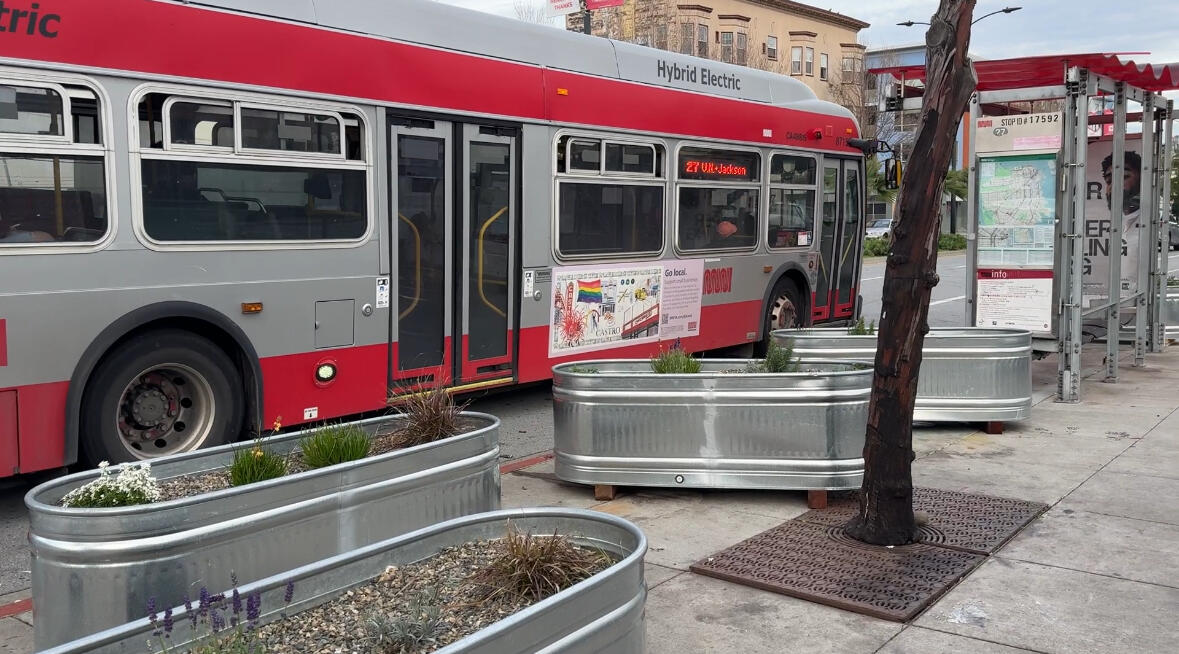
Two layers of privately installed metal tanks block access to the 27 MUNI bus.
They discourage walking, rolling, and riding the bus.Excessively bulky planters significantly reduce the usable width of sidewalks. They turn the sidewalk into an obstacle course, difficult or sometimes impossible to navigate in a wheelchair or mobility scooter, or with a shopping cart or stroller. In some cases, the barricades may render the sidewalk nearly impossible to navigate for those with mobility issues. This makes people want to give up and drive — so much for those climate goals or being a pedestrian-friendly city.
They create mobility issues.For people who are blind or visually impaired, navigating around unexpected barricades can be disorienting and dangerous, as they may not detect them. Planter barricades also obstruct the path for those using crutches, walkers, or wheelchairs that need a wider path. Many are placed on curb cuts or by bus stops, which is a surprise obstruction.
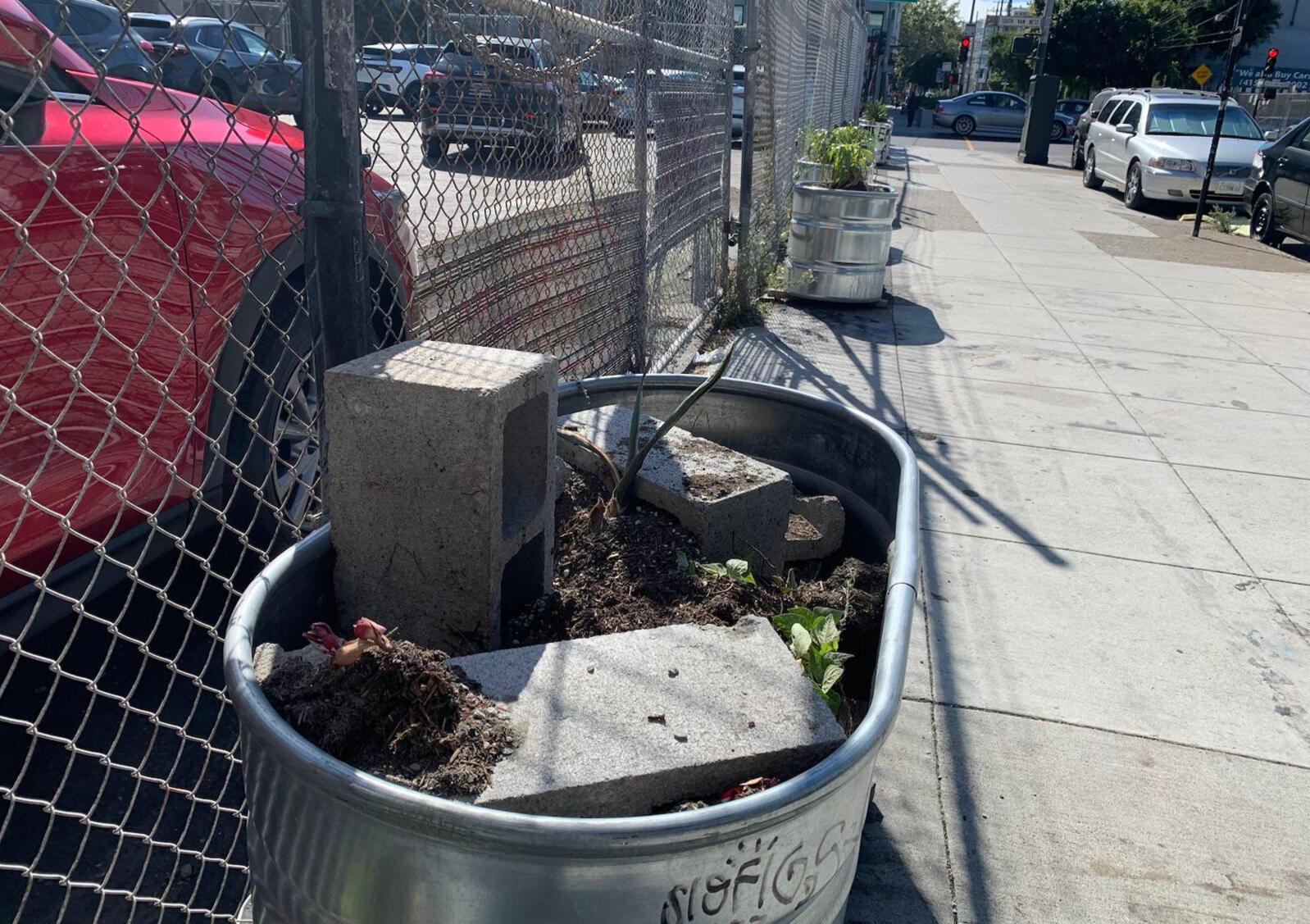
Many planters end up becoming industrial trash cans.
Barricades prolong homelessness instead of addressing it.Sidewalk barricades enable City Hall to avoid tackling the main cause of homelessness: a lack of affordable housing. To create meaningful change, the City must prioritize funding for the housing department, delivering and filling affordable units, and improving outreach. Instead, the barricades serve as a pressure release valve: temporarily reducing complaints from influential groups, donors, and businesses. This reduces the urgency to address the underlying issues, ultimately prolonging the suffering of the homeless population.
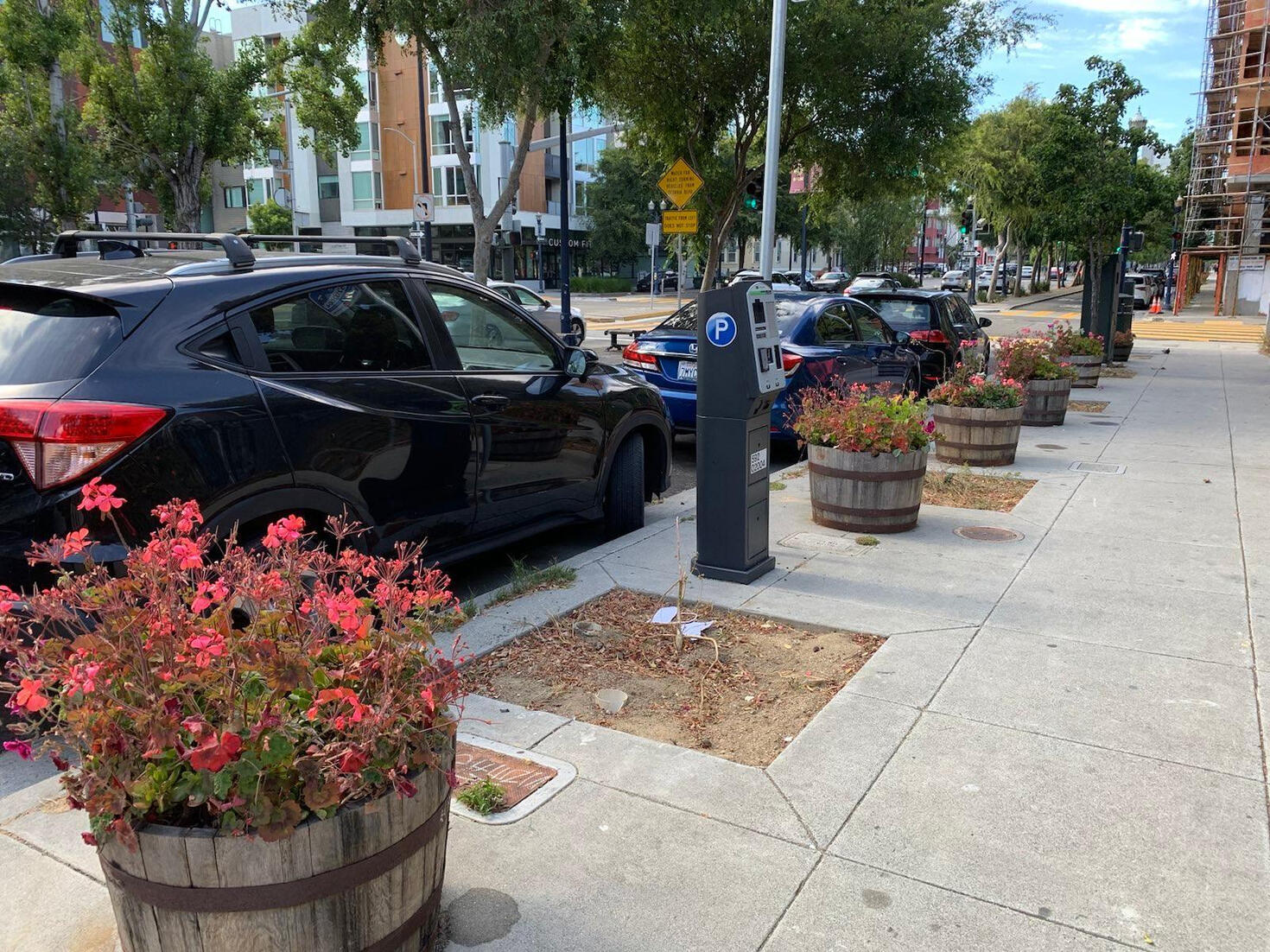
Heavy barrels block the sidewalk.
The tree boxes are empty.
Planters with dead plants.
Space around the tree remains unplanted.
Hostile planters make urban gardening divisive.The proliferation of abusive “planters” has hurt legitimate urban gardening efforts by making neighbors suspicious they might have hostile intent. For those of us who really do love the urban forest, native plants, and want to create welcoming spaces, barricaders have made our efforts more difficult. It's clear that a planter is hostile when it's installed right next to an empty tree box, revealing that the true purpose is not to enhance the urban environment but to restrict access to public spaces.

3 layers of planters block this sidewalk.
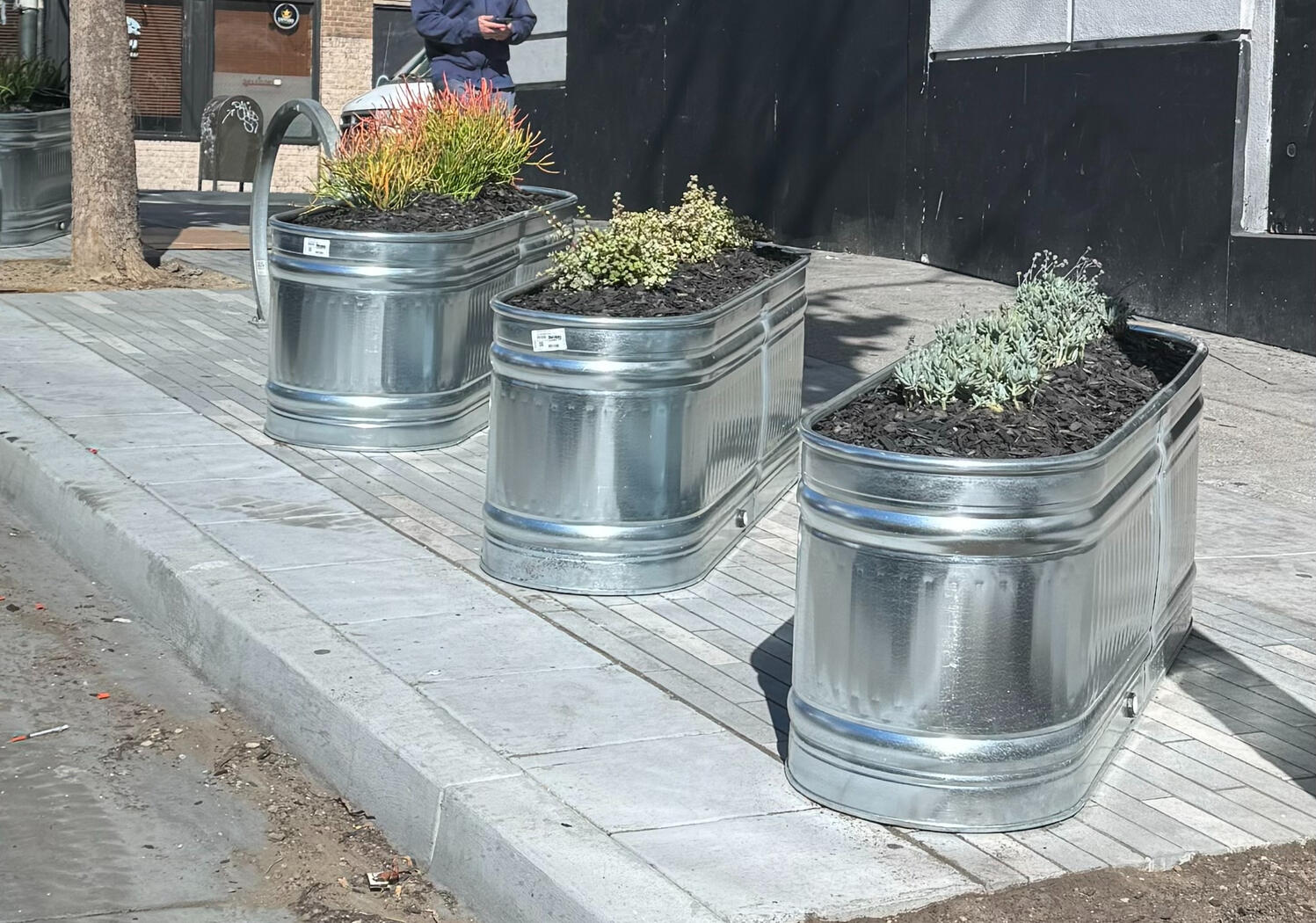
Planters at a diagonal take up more width.
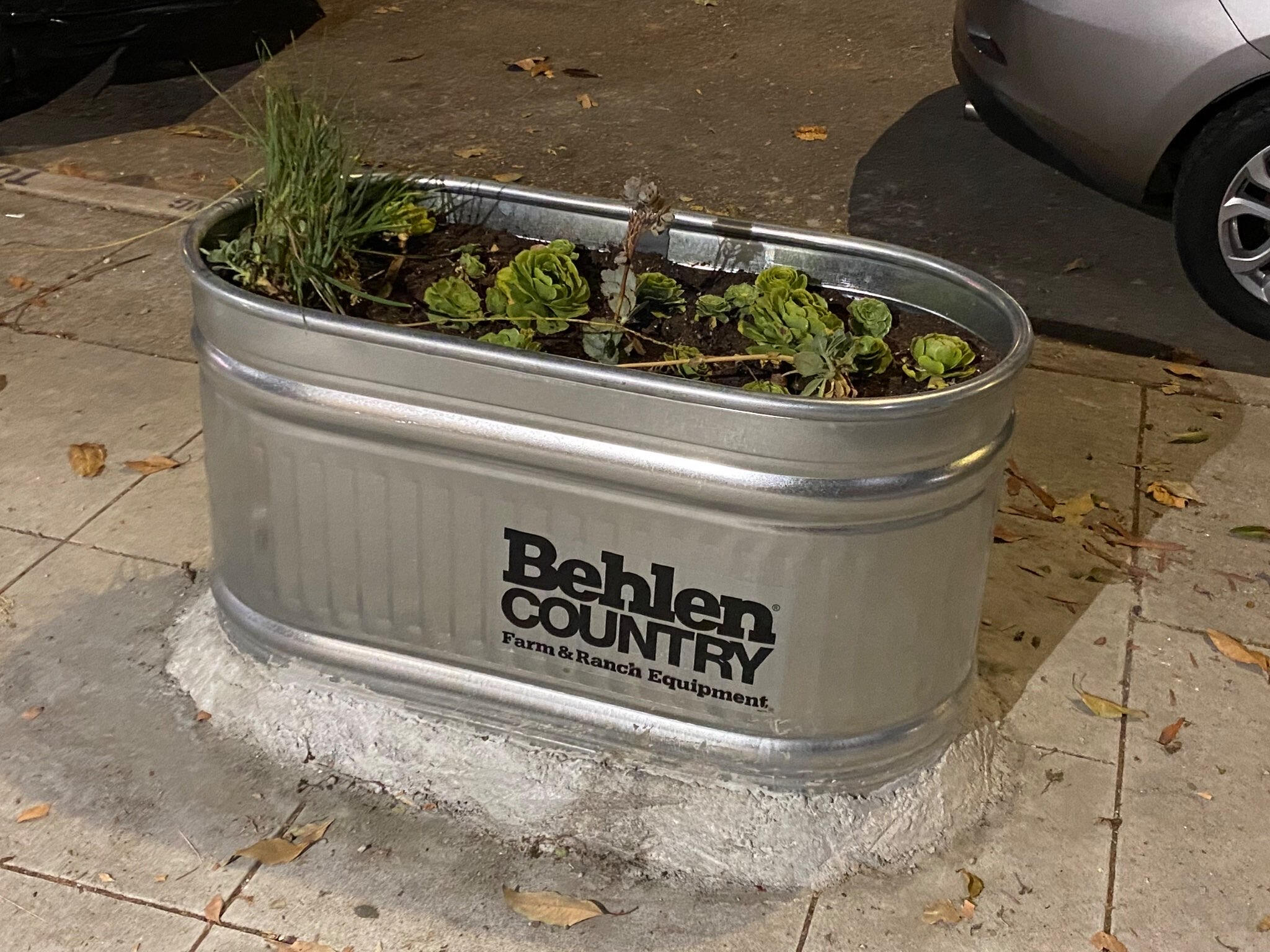
A planter privately cemented to the sidewalk. This is not gardening.
Barricades privatize public spaces.Private citizens and businesses are installing 1,200 lb. planters themselves without proper permission or oversight. In many cases, these barricades are being glued or cemented down to the sidewalk, effectively privatizing public spaces. This privatization of sidewalks sets a dangerous precedent, as it allows private entities to dictate the use and accessibility of public areas. The end game of sidewalk privatization is a city where public spaces are increasingly fragmented, exclusive, and unwelcoming.

SFDPW's Guidelines. Most planter barricades do not allow 4' for the path of travel.
They have always been illegal.Planter barricades violate the commonsense planter guidelines that have been in place since 2014 to prevent unreasonable impacts on sidewalks, such as being limited to 36” wide unless a permit is obtained, leaving a six-foot wide throughway zone on the sidewalk, and not being placed in front of bus stops. But instead of enforcing its own guidelines, DPW is now in the process of normalizing barricades by writing new, looser guidelines that give a blank check to the quiet destruction of sidewalks across our city.
The City of San Francisco must commit to protecting and enhancing public sidewalks as essential community assets for all.
Send a letter to San Francisco Department of Public Works Director Carla Short [email protected] and [email protected] to demand that SFDPW remove barricades and enforce policies to prevent them.
Advocate with us.
Gardens Not Barricades is demanding that the city write and enforce guidelines that will prevent abusive and hostile planter installations and save our sidewalks.

Follow us on Instagram: @gardensnotbarricades
Examples of public gardening that's welcoming.
Benches around trees
Modular benches and seating
Potted plants that can be moveable
Flowers and plants in existing tree boxes
Flowers and plants in traffic calming medians
Reviving tree boxes with trees

Plenty of seating, lush tree boxes, minimalist potted plants, and enough clearance for walking and rolling. Plus, nothing is too heavy.
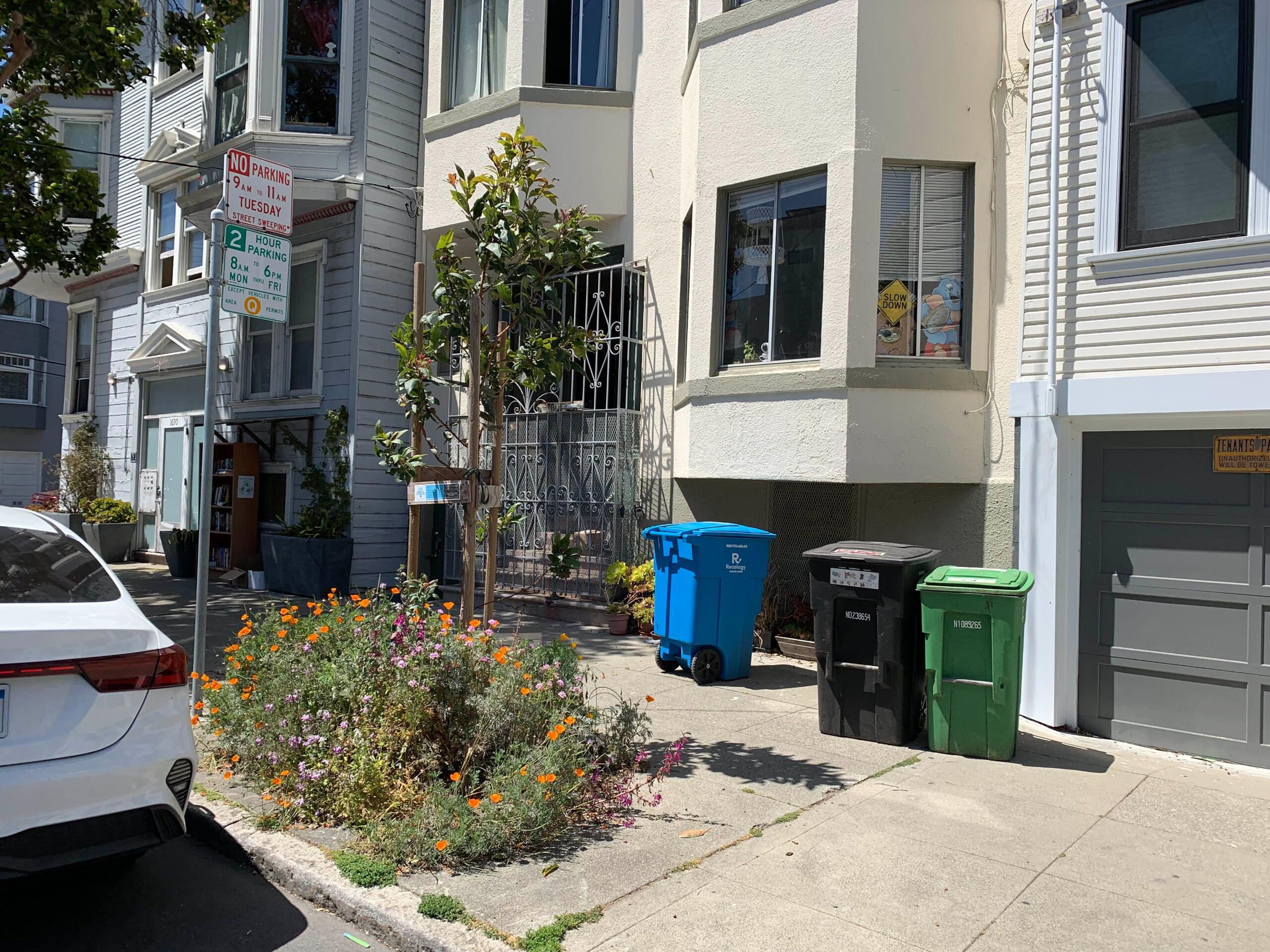
An existing tree box full of wildflowers at the base. No barrels or tanks added.

